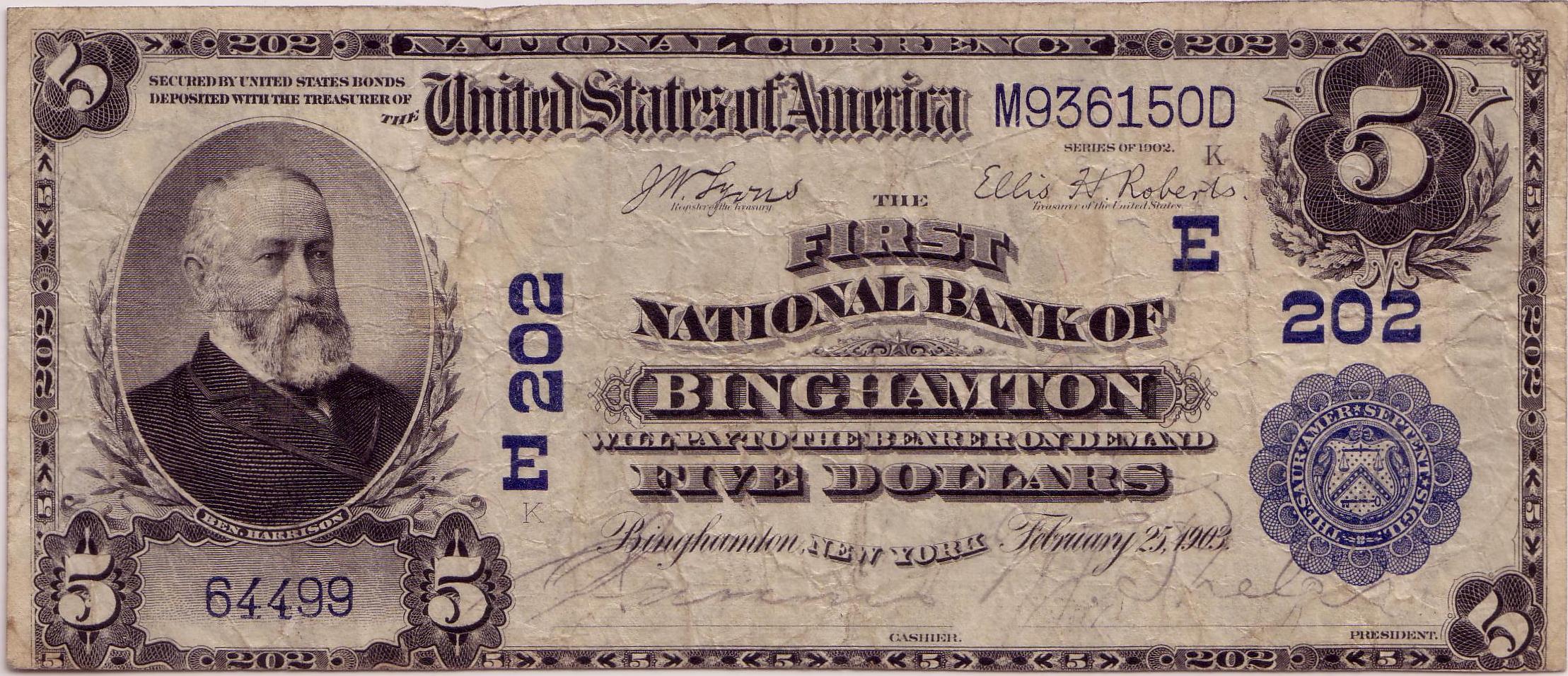We'll finish our blog series with the diagnostics published in "Identification of Series of 1882 and 1902 National Bank Replacement Notes Printed in the 1903-1915 Period" by R. Shawn Hewitt and Peter Huntoon. SPMC members can read the article here.
Diagnostics
National bank notes meeting the following criteria are replacement notes printed after the general conversion to new style fonts (circa September 1903):
- The note must have serial numbers of the old style.
- The note must be Series of 1882 or Series of 1902.
- The Series of 1882 Brown Backs and Series of 1902 Red Seals must have serial numbers greater than the following:
| As of 8/31/2012 | 1882 Brown Backs | 1902 Red Seals |
| 5-5-5-5 | H705403H | A530328 |
| 10-10-10-10 | all qualify | all qualify |
| 10-10-10-20 | E457219E | B241777 |
| 50-100 | B468523 | A92661 |
The serial numbers listed above may be adjusted as new observations are made.
Here is a summary of the known replacements as of August 31, 2012:
| All | $5 | $10 | $20 | $50 | $100 | Total |
| 82BB | 6 | 4 | 1 | 0 | 0 | 11 |
| 82DB | 3 | 0 | 1 | 0 | 0 | 4 |
| 82VB* | 1 | 1 | 0 | 0 | 0 | 2 |
| 02RS | 24 | 13 | 3 | 0 | 0 | 40 |
| 02DB | 4 | 13 | 1 | 1 | 0 | 19 |
| 02PB* | 4 | 0 | 0 | 0 | 0 | 4 |
| Total | 42 | 31 | 6 | 1 | 0 | 80 |
| Not #1 | $5 | $10 | $20 | $50 | $100 | Total |
| 82BB | 3 | 3 | 1 | 0 | 0 | 7 |
| 82DB | 2 | 0 | 1 | 0 | 0 | 3 |
| 82VB* | 1 | 1 | 0 | 0 | 0 | 2 |
| 02RS | 6 | 4 | 0 | 0 | 0 | 10 |
| 02DB | 0 | 3 | 1 | 1 | 0 | 5 |
| 02PB* | 4 | 0 | 0 | 0 | 0 | 4 |
| Total | 16 | 11 | 3 | 1 | 0 | 31 |
*Includes “hybrid” font serials. The census of 1902 PBs has not yet been systematically searched for replacements.
As you find replacement nationals, please report them in our forum, here. I'll post an update to the summary data late in the year.
Where do we go from here? This work can be extended to further research on replacement national bank notes made before 1903. It may require that we inventory every font used for serial numbers on nationals since their beginning in 1863, in hopes that we can find some distingushing characteristics. This is certain to be a long process.
However, I think there are also opportunities in researching non-star replacements on 20th century type notes. I have some preliminary insights into this, and hopefully this will be the topic of a future blog series.



